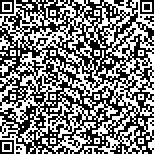| 摘要: |
| 物质空间的特征是一种由内在文化
基因决定而呈现出来的显性性状,传统地域
性建筑是特定时代和地区的产物,其营建活
动在“文化基因”传递过程中起到关键作用。
因此,本文以文化人类学作为理论视角,借以
“文化基因”的概念,以水西“土司建筑”这
一地域性建筑为例,探讨物质空间背后的建
筑文化动因,再抽取三个层面的文化基因进
行隐含基因和显性性状之间的互推互证,为
从文化人类学的角度研究建筑内部的文化基
因提供一个参考范式,对于全面认识土司建
筑这一传统地域性建筑以及对其的保护具有
一定的作用。 |
| 关键词: 文化人类学 土司建筑 文化基因 水西彝族 |
| DOI:10.13791/j.cnki.hsfwest.20210216 |
| 分类号: |
| 基金项目:文化人类学;土司建筑;文化基因;
水西彝族 |
|
| The Study on Culture Genes of the Shuixi Yi Ethnic Group’s Regional Architecture fromthe Perspective of Cultural Anthropology |
|
DU Chunlan,CHANG Bei
|
| Abstract: |
| The feature of physical space is a dominant character determined by the internal
cultural gene. Traditional regional architecture is the product of a specific era and region, and
its construction plays a key role in the transmission of cultural gene.
Tusi residential buildings fully reflect local rulers’ ambivalence. On the one hand, Tusi
looked up to the central government and the Han culture. On the other hand, Tusi sought to
preserve his own authority in the region. And, underpinned by the patriarchal clan system
and hereditary system, the local regime of Shuixi Yi ethnic group lasted for more than 1 400
years, giving birth to a unique power system, cultural order and a rich body of tangible cultural
heritages. Though the regime was independent from the Han government that ruled central
China, its history and culture was deeply influenced by the Han culture. This is due to the
Tusi system under which the local government fell subordinate to the central government as
well as the cultural fusion between the Yi and Han ethnic groups. Nevertheless, a unique local
cultural system was created and preserved. A large number of Tusi residences that symbolize
the authority of Tusi and reflect the infusion between the two nationalities were built, adding
to the treasure house of traditional Chinese architecture.
Based on the theory of the cultural anthropology perspective, in virtue of the concept of
“cultural genes”, this article takes the regional architecture “Tusi buildings” in Shuixi as an
example, and discusses the architectural culture motivation behind the material space, and then
extracts three levels of cultural gene of implicit and explicit properties between the colliding
certificate. It provides a reference paradigm for the study of memes in architecture from the
perspective of cultural anthropology, and plays a role in the comprehensive understanding and
protection of Tusi architecture.
The methods of gene production include human response to nature (livelihood layer),
human and human, human and society (institutional layer), and the construction of the
spiritual world (ideological layer). The genes generated by these three methods are respectively
reflected in the building site selection experience, spatial layout, architectural structure and
detailed decoration, etc., which can be further corroborated with historical information at
the time, including historical origin and social background, the birth and implementation of the Tusi regime system, the changes in the relationship between the local regime of people in the Yi ethnic group and the central dynasty,
and the ethnic Survival information of groups and Tusi groups, etc. Therefore, under the influence of the livelihood gene, the national cultural
characteristics of migratory labor, the buildings are typically nestled along mountains. Under the influence of the gene of the system, the social
structure organization under the Tusi system, the buildings are largely symmetrical with a central axis, following the examples of palaces of the
Han ethnic group; meanwhile, the special arrangements and defense structures reveal the features of the Tusi system. Under the influence of
consciousness gene, the multicultural level after national integration, the details reflect the aesthetic preferences of the local upper class as well
as characteristics of the culture of the Yi ethnic group that remained after the cultural infusion.
Genes have a controlling effect on material space. The characteristics of material space are expressed dominant traits. We can make use
of these dominant traits to infer the deep-seated inducement from the perspective of cultural anthropology—architectural cultural genes.
The chieftain architecture is a collection of genes, and cultural genes at different levels are reflected in the spatial analysis of different levels.
The corroborative relationship between the appearance and expression of invisible genes and architectural culture is still indelible even after
the changes of times and cultures. Therefore, interpreting the deep-seated genes in the space plays an important role in the comprehensive
understanding of the traditional regional architecture, the Tusi building, and even its protection and inheritance. |
| Key words: Cultural Anthropology Tusi Buildings Cuture Genes the Yi Ethnic Group |


